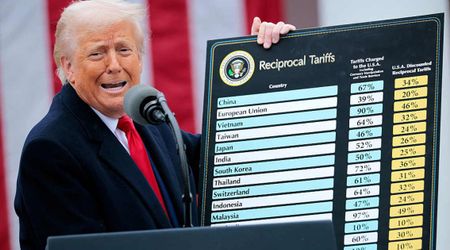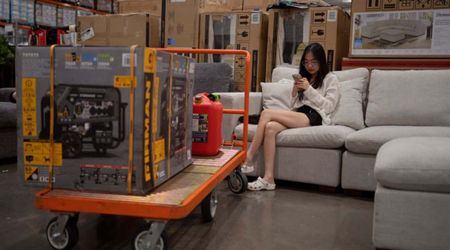The Latest ‘Chronoworking’ Trend Has a Lot to Offer to Employees: Here Are the Pros and Cons

Workers across the globe have long struggled to find work-life balance. In America alone, 63% of workers have considered changing jobs due to workplace stress, per a VoiceNation survey. Meanwhile several have made the move to jobs with more flexibility and many have given into work trends like coffee badging, shadow policies, quiet quitting, and more which aren’t appreciated by employers. However, one such emerging work trend called 'chronoworking' which prioritizes flexibility based on work styles might actually be beneficial for all involved when implemented with care.

What is 'chronoworking'?
The term ‘chronoworking’ was originally coined by journalist Ellen C Scott, per BBC. The productivity hack enables employees to ditch standard office hours and pick schedules that match their chronotypes or circadian rhythms.
The 'chronoworking' productivity hack that helps workers excel https://t.co/qijSTWTm0w
— BBC Worklife (@BBC_Worklife) February 21, 2024
This refers to the natural time at which their bodies sleep, wake up, and reach peak productivity. Chronoworking provides more flexibility as employees can schedule work as per their needs and productivity patterns. According to a Ted Talk from American clinical psychologist and "sleep doctor" Michael Breus, about 55% of people find peak productivity between 10:00 and 14:00 hours, 15% prefer early-morning starts, 15% work better late into the night and 10% have an erratic circadian rhythm, which varies from day to day.
Traditionally, most workers follow roughly similar nine-to-five work schedules even though their circadian rhythms vary. Thus, from a neuroscience and biological perspective, chronoworking might make sense and this is most prevalent among self-employed people and solopreneurs.
How is chronoworking beneficial?
When workers are in tune with their circadian rhythm, they may be more productive and perform tasks better with more efficiency. This can boost motivation, and job satisfaction — and may help reduce feelings of stress and burnout. “By aligning work tasks with these optimal times, individuals can foster a harmonious synthesis of mental, physical, and emotional well-being, leading to enhanced productivity and overall job satisfaction,” corporate wellness consultant, Tawn Williams told Forbes.
Ditch the 9-5: Is ‘chronoworking’ a recipe for chaos?
— Gulf News (@gulf_news) April 14, 2024
Experts weigh in on whether working based on your Circadian rhythm will lead to burnouthttps://t.co/csC4ljIoq1
Furthermore, this method of working can also improve focus and enable workers to feel more autonomy over their schedules. The idea of chronoworking is most cherished by the younger workers who like the idea of suiting their schedules to their most productive hours, Dirk Buyens, professor of HR management at Vlerick Business School in Brussels, said in a BBC report. Apart from workers, Buyens says that companies also stand to benefit from the method as allowing staff to work when they're at their best could boost staff output and employee wellbeing, with a “knock-on positive effect” on employee retention.
Downsides of chronoworking
While the trend prioritizes flexibility it also presents challenges, especially for teams that share similar tasks or similar work hours. Team members need at least some "crossover hours" to schedule meetings and share projects. They need to be informed and aware of every team member’s individual working hours to maintain a communication link. Furthermore, managers may also struggle while overseeing staff output and it may be difficult to make sure all team members are available and supportive to the team and leaders at all times.

However, there are ways around these issues for companies who are looking to adapt. In the BBC report, the CEO of London-based jobs platform Flexa said that all 17 employees of the organization follow the chronoworking method. Thus, to ensure communication, the company requires all its staff to be online during the core hours of 11:00 to 15:00, during which they "blitz through" shared tasks. Meanwhile, other companies who have opted for the method use software to record meetings for those who aren’t there at the time, to bridge the gap of asynchronous work.























